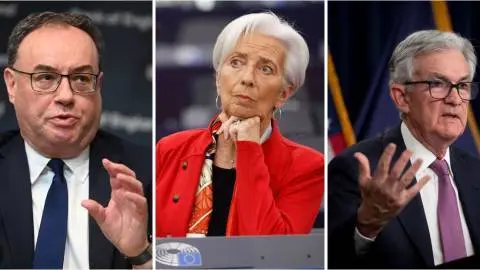ECB preview: Still licensed to hike
When the European Central Bank meets next week, all eyes and ears will once again be on the communication. A rate hike of 50bp looks like a done deal. How far and how fast the ECB will go from there, is still unclear
Recent economic data in the eurozone offers a taste of what will increasingly become a new challenge for the ECB: a somewhat more resilient than expected economy, improving sentiment indicators and dropping headline inflation. While the growth part argues in favour of more rate hikes, lower inflation could argue in favour of taking a step back given that the central bank's primary mandate is to reach price stability. For next week, however, both developments are too fresh and tentative for the ECB to change course. Instead, the ECB looks set to hike interest rates by another 50bp. There has not been a single ECB member on the record with a diverting view.
Risk of longer-lasting inflationary pressure
The reason for a 50bp rate hike is clear: the ECB’s job is far from done as the Bank's own December projections pointed to inflation at 3.4% in 2024 and 2.3% in 2025. Inflation was only expected to return to 2% in the second half of 2025. These estimates have provided a clear license to hike for quite some time. The only problem with these forecasts is that they are highly conditional on the so-called technical assumptions for interest rates, energy prices and exchange rates. At the December press conference, the ECB stated its discontent with the market pricing of future rate hikes, hoping for higher pricing, which would mechanically lower the ECB’s inflation forecasts. With energy prices much lower than in December, the exchange rate stronger and interest rates higher, back-of-the-envelope estimates show that, if everything else remains the same as it was in December, the ECB’s headline inflation projections could easily be lowered by 0.3 to 0.5 percentage points for 2024 and 2025.
Looking beyond next week’s meeting, as long as core inflation remains stubbornly high and core inflation forecasts remain above 2%, the ECB will continue hiking rates. The increasing probability that a recession will be avoided in the first half of the year also gives companies more pricing power, as reflected in January’s PMI, showing that selling price expectations remain elevated. The celebrated fiscal stimulus, which has eased recession fears, is an additional concern for the ECB as it could transform a supply-side inflation issue into demand-side inflation. These are two factors that could extend inflationary pressures, albeit at a lower level than currently, in the eurozone.
More hikes to come but communication needs improvement
More generally speaking, we are currently witnessing a mirror image of the ECB up until 2019. Back then, the Bank had a clear easing bias and was chasing disinflation with all means possible, even though the root causes for disinflation lay outside of the ECB’s realm. Now, the ECB has a clear tightening bias and is chasing inflation, which arguably also has its root cause in something the ECB cannot tackle. Still, it looks as though the current generation of ECB policymakers will only back down once they are fully convinced that inflation is no longer an issue. In this regard, the slight improvement of the eurozone’s growth prospects as well as abundant fiscal stimulus have given the Bank even more reason to continue with its hawkish mission.
With all of the above in mind, it is hard to see the ECB cutting interest rates again any time soon. Current market expectations about ECB rate cuts in 2024 are premature. If anything, these expectations, as reflected in dropping longer-term interest rates, are an additional argument for the ECB to stay hawkish. However, sounding hawkish will not be enough. Recent weeks have once again illustrated that the ECB’s communication is suboptimal. Over the last 12 months, there has been forward guidance, meeting-by-meeting, focusing on actual inflation, inflation projections, core inflation, wages, financing conditions etc, etc, etc. But communication is always a two-way street. If ECB policymakers are not satisfied with how financial markets perceive their communication, they might need to ask themselves why this is happening and reflect on the messages they have been sending.
Still licensed to hike
For next week, the ECB remains licensed to hike. We expect hawkish comments by ECB President Christine Lagarde in order to prevent another drop in market interest rates. In this regard, it would help if the ECB were to clarify its reaction function and send a message that has a longer shelf life than just a few days.
This publication has been prepared by ING solely for information purposes irrespective of a particular user's means, financial situation or investment objectives. The information does not constitute investment recommendation, and nor is it investment, legal or tax advice or an offer or solicitation to purchase or sell any financial instrument. Read more
Download
Download article
26 January 2023
Our view on this week’s biggest central bank decisions This bundle contains 4 Articles